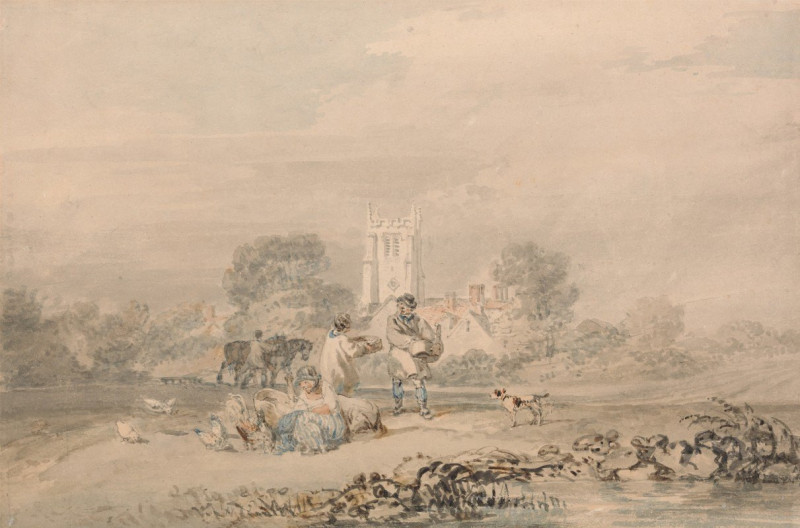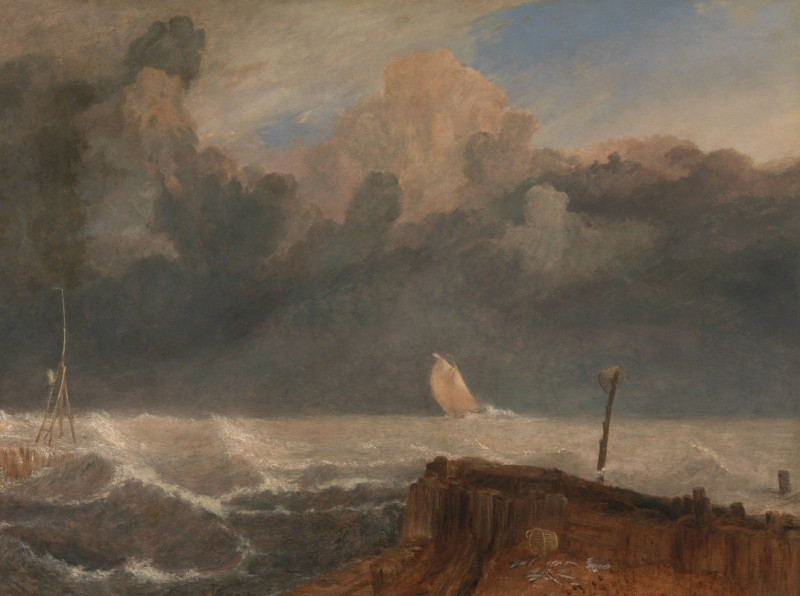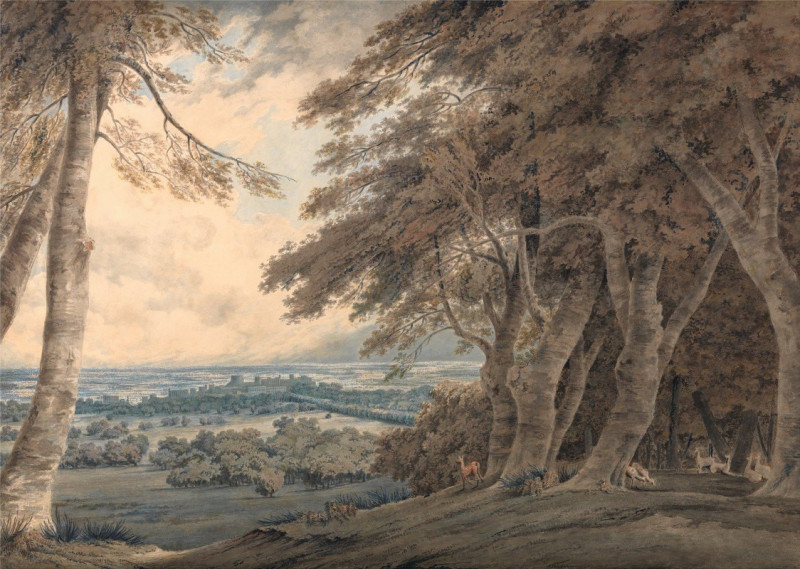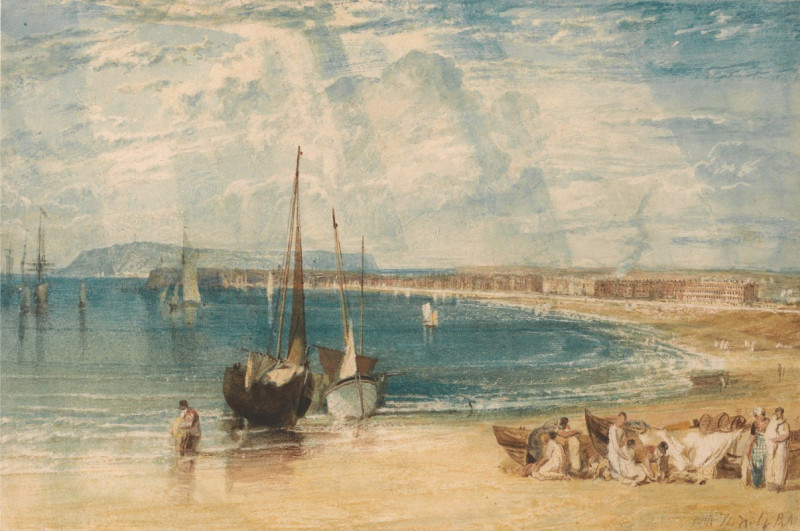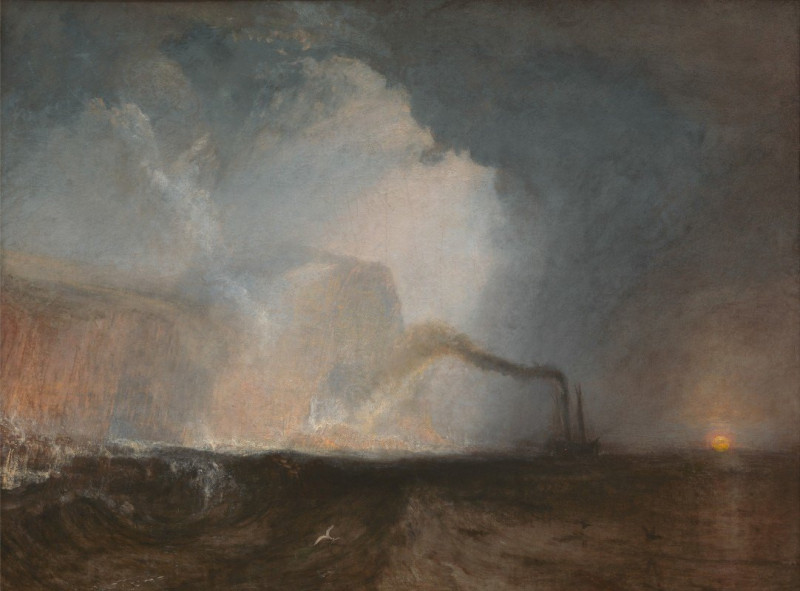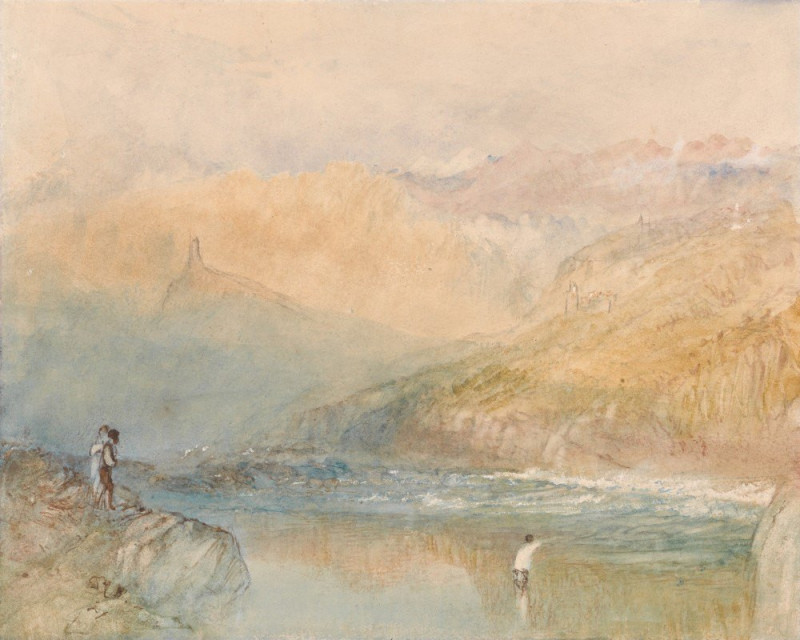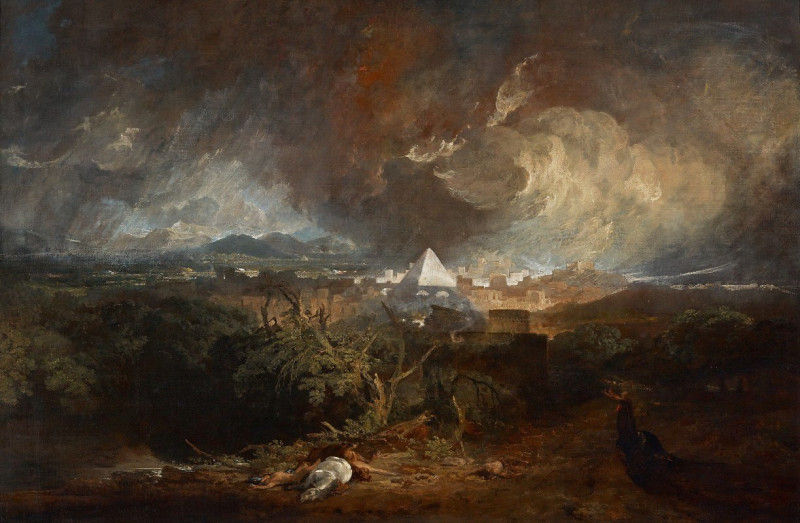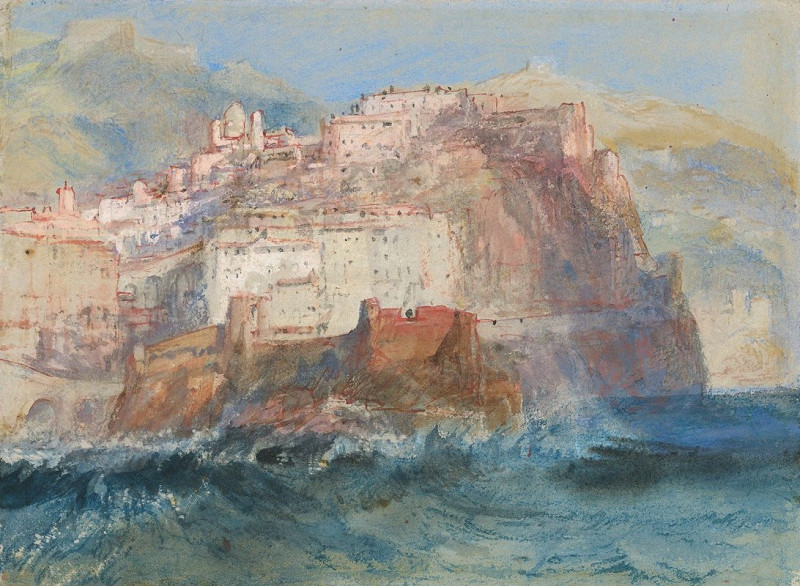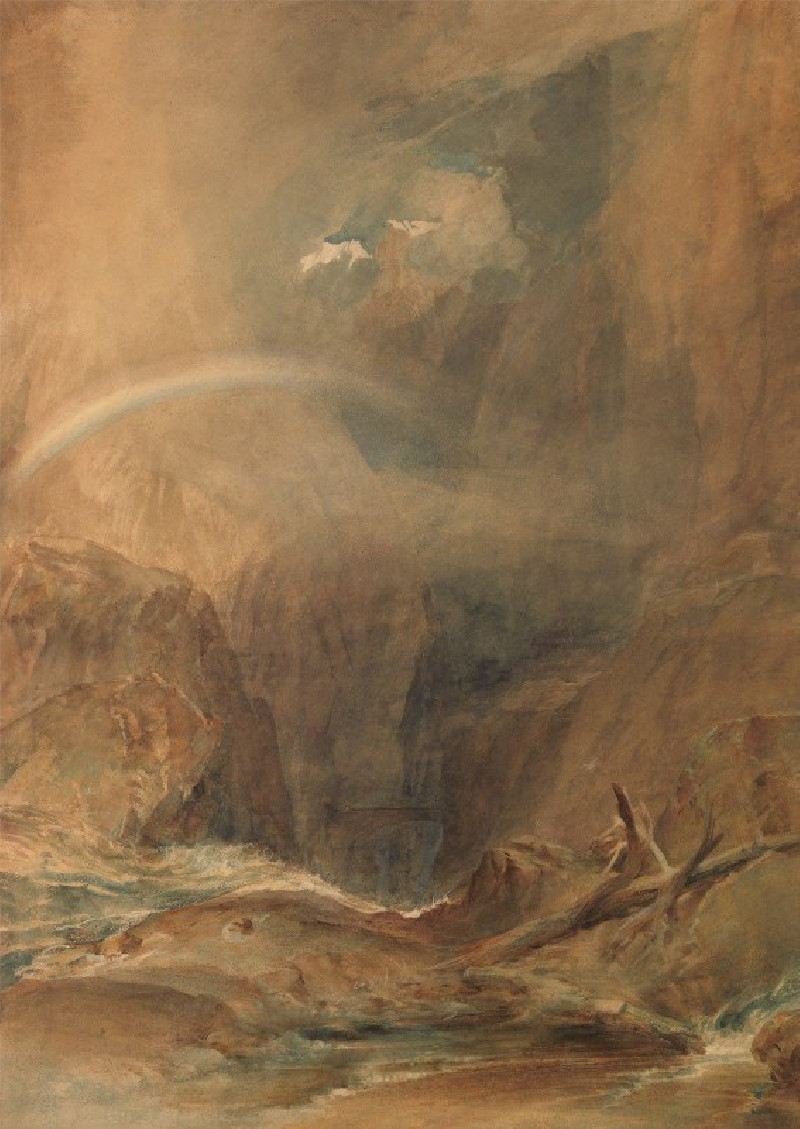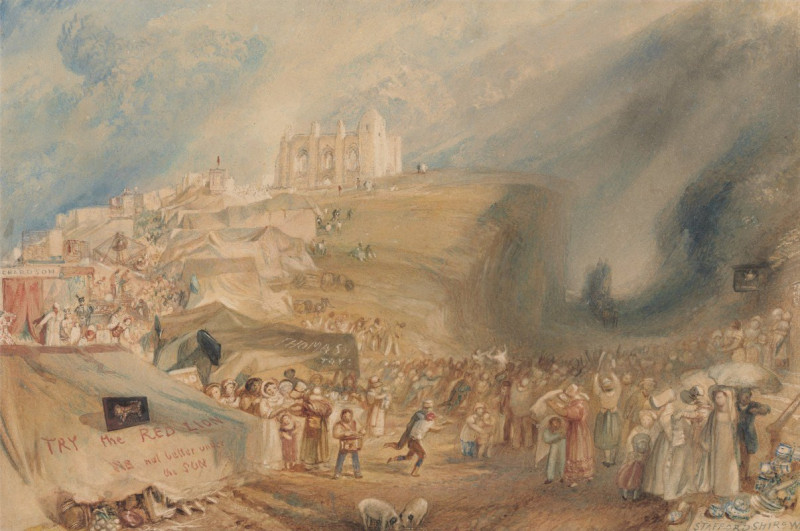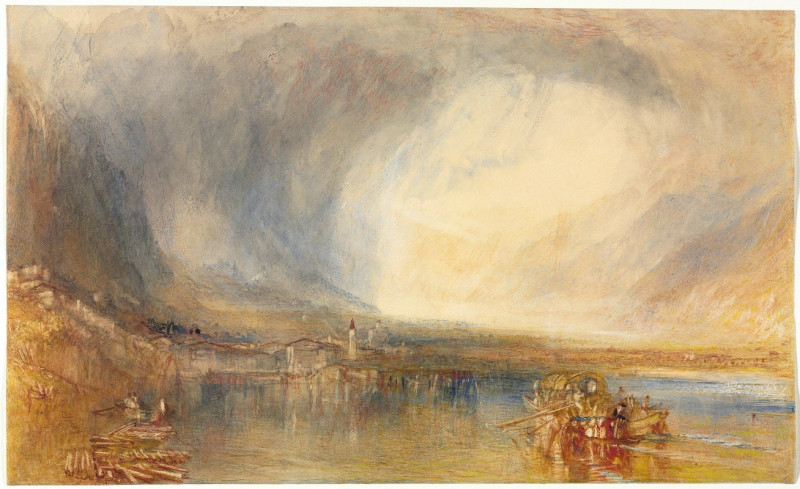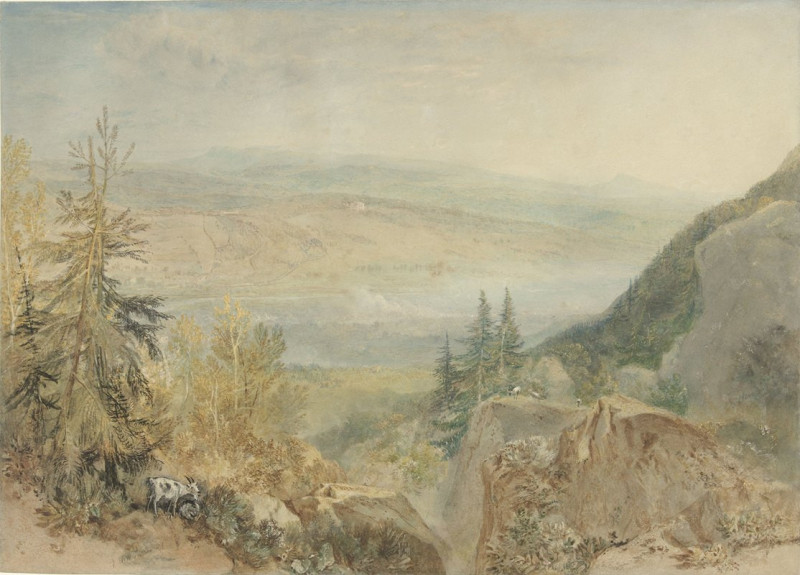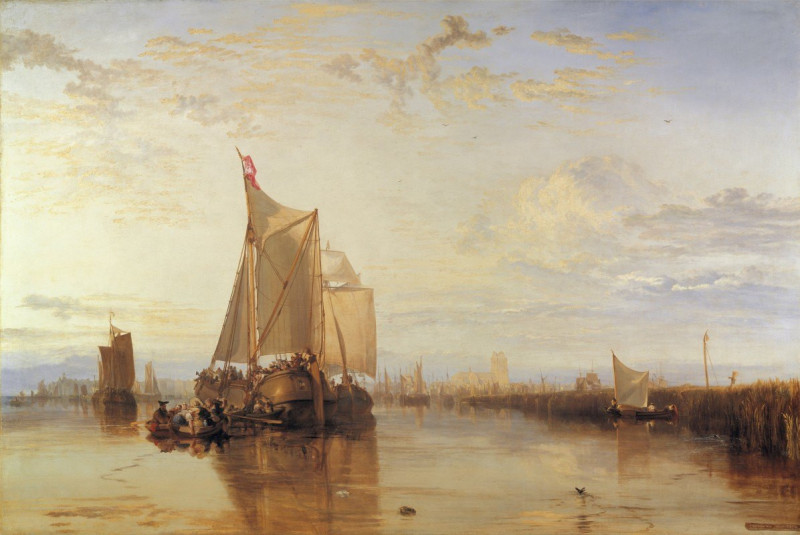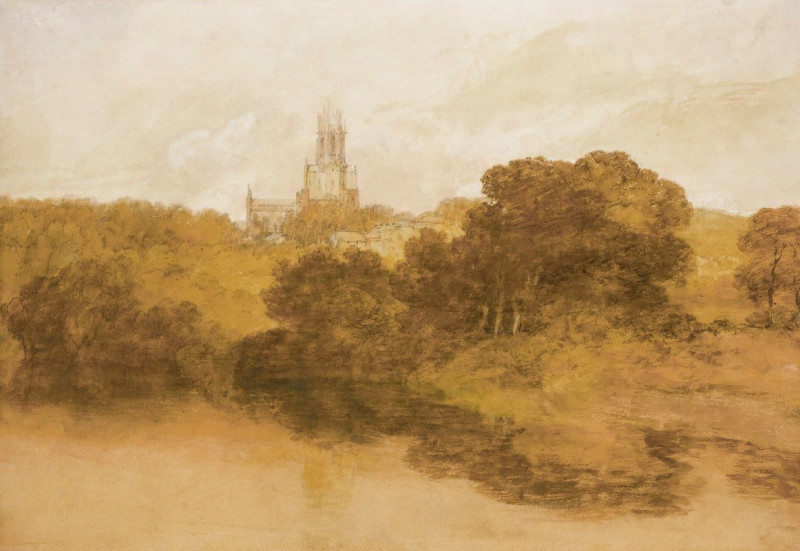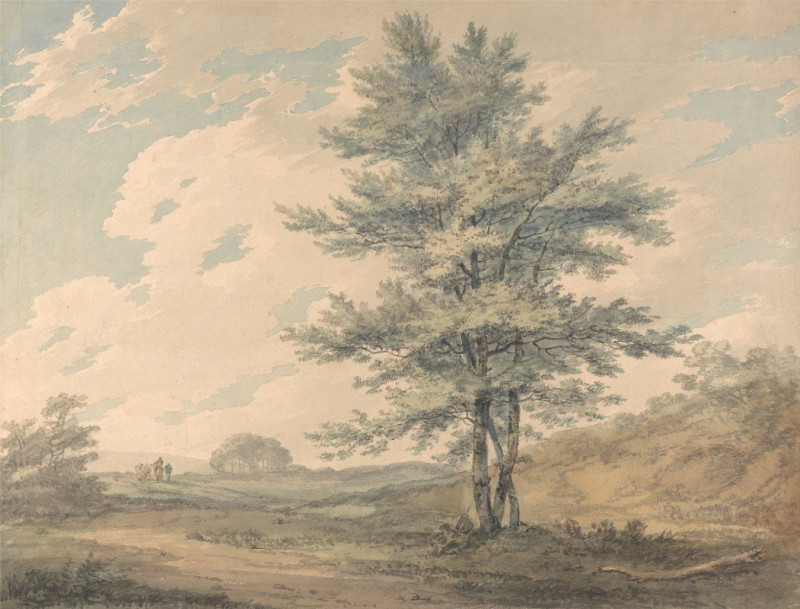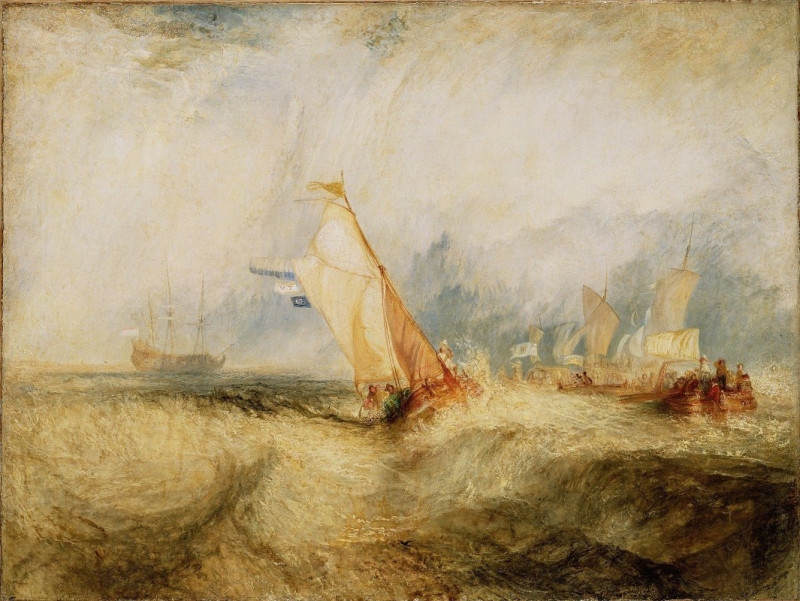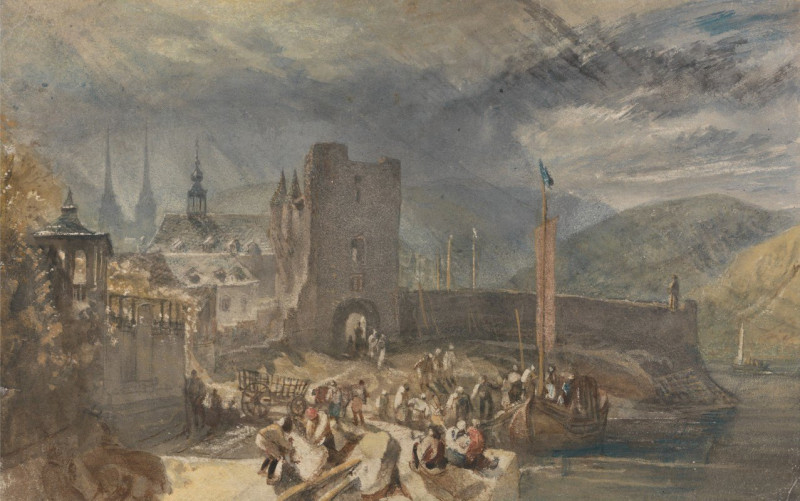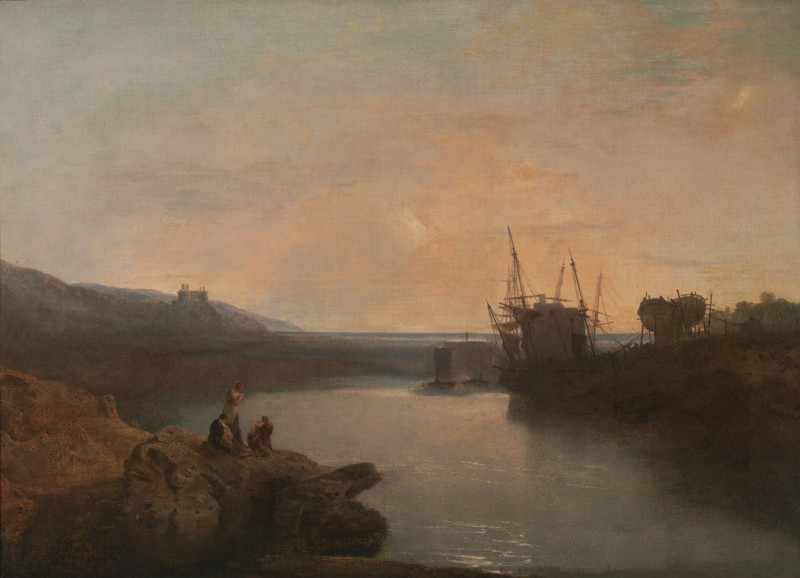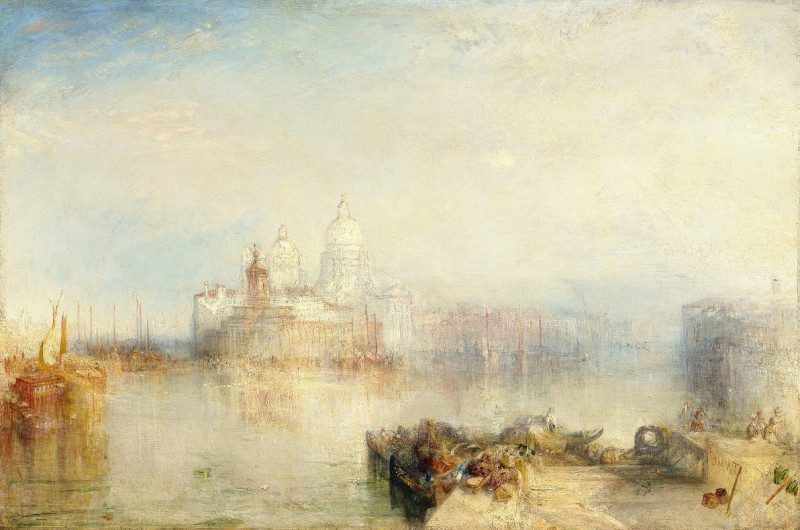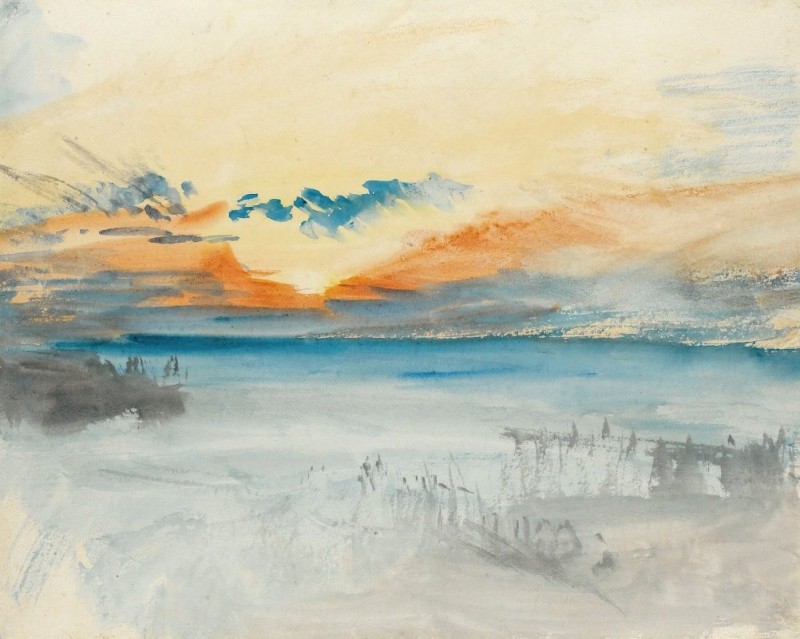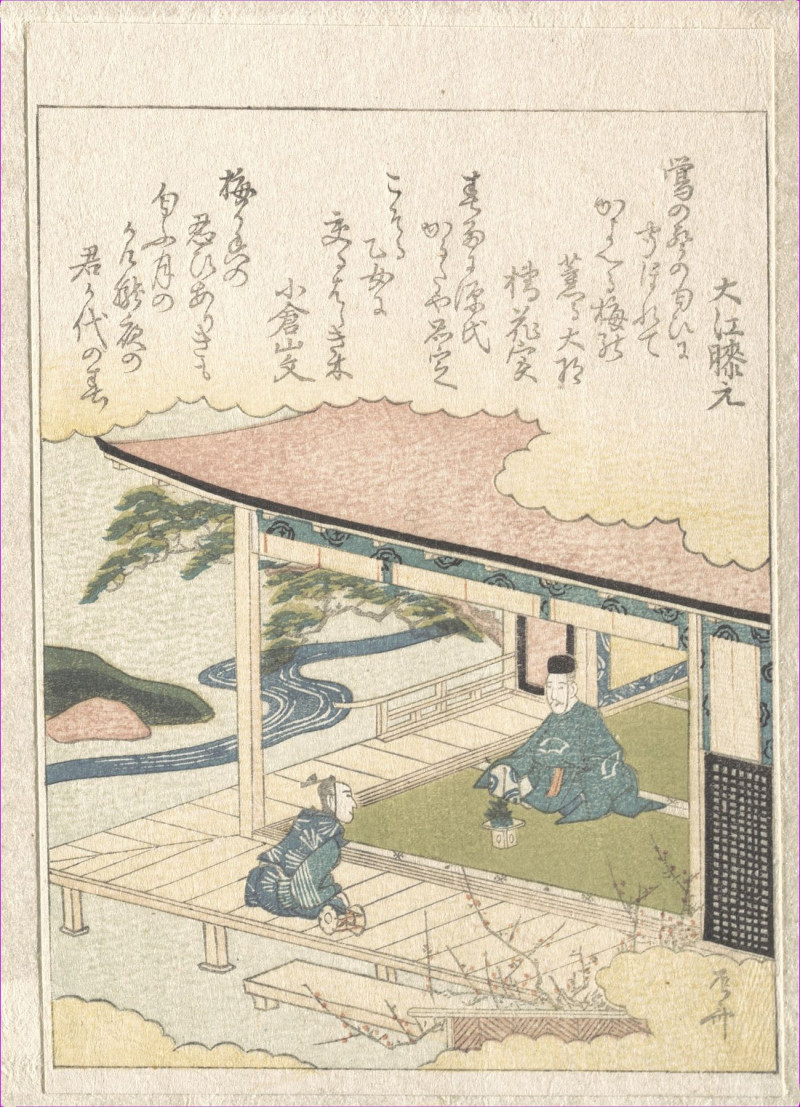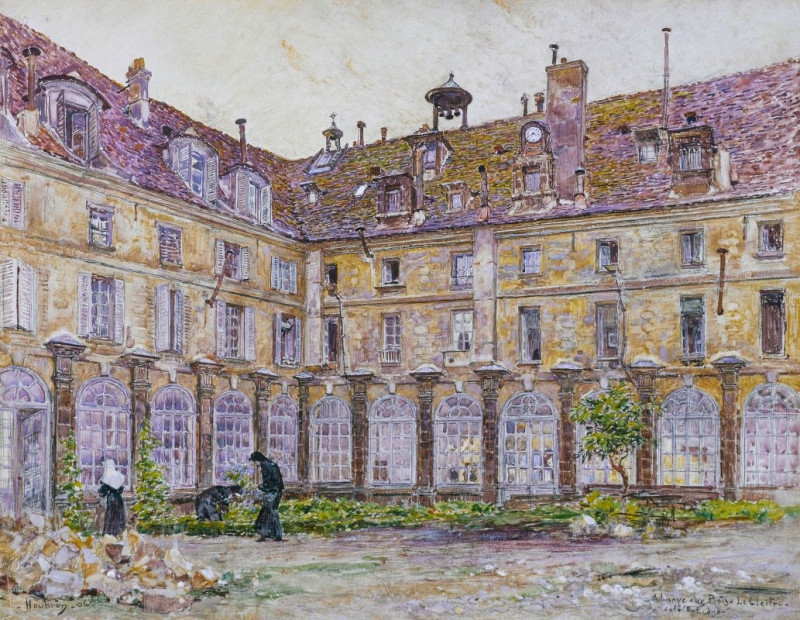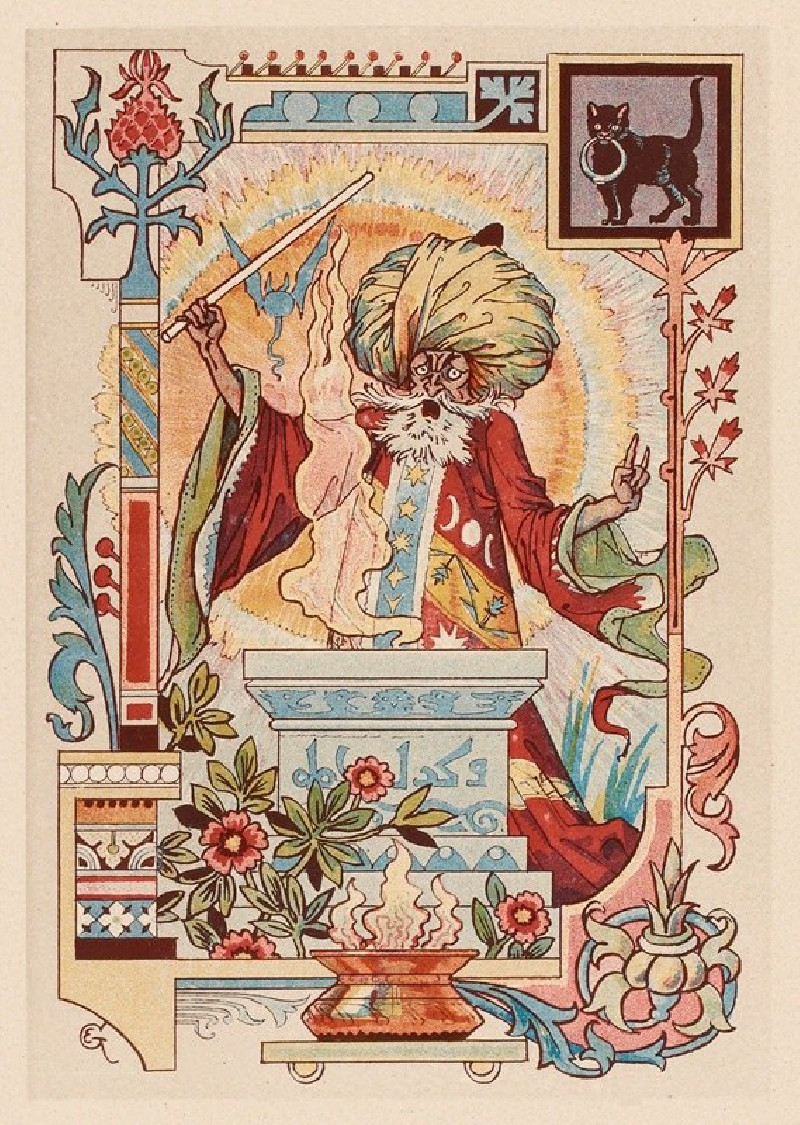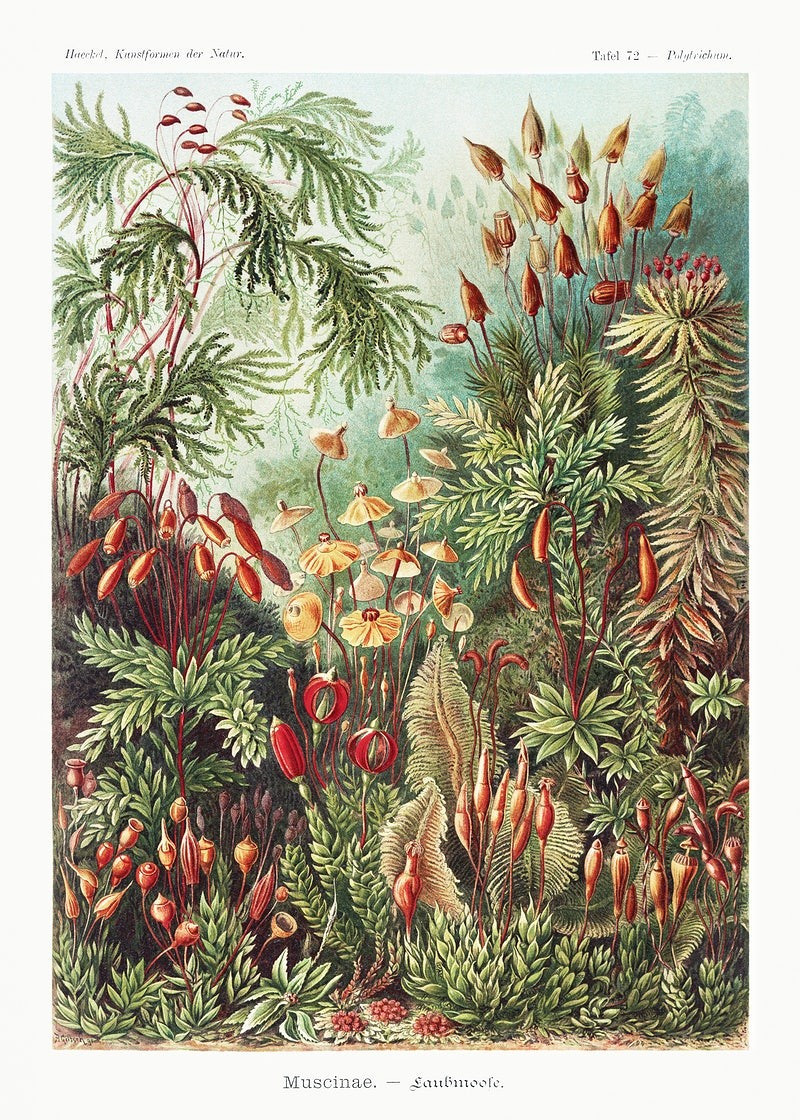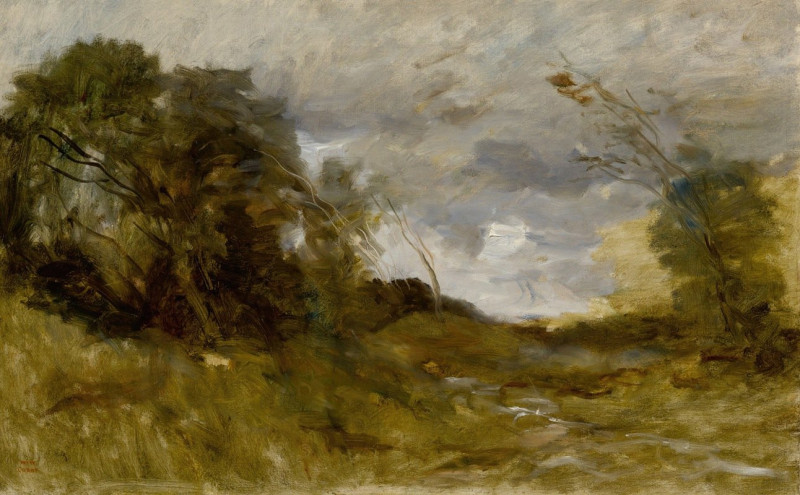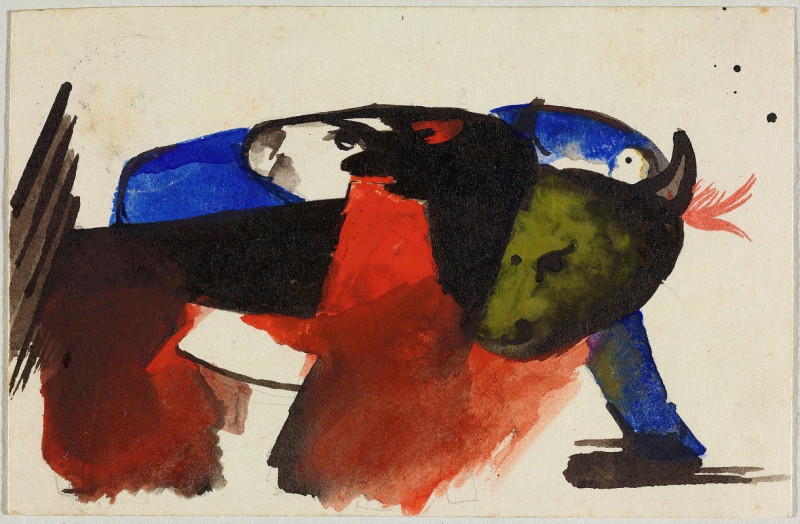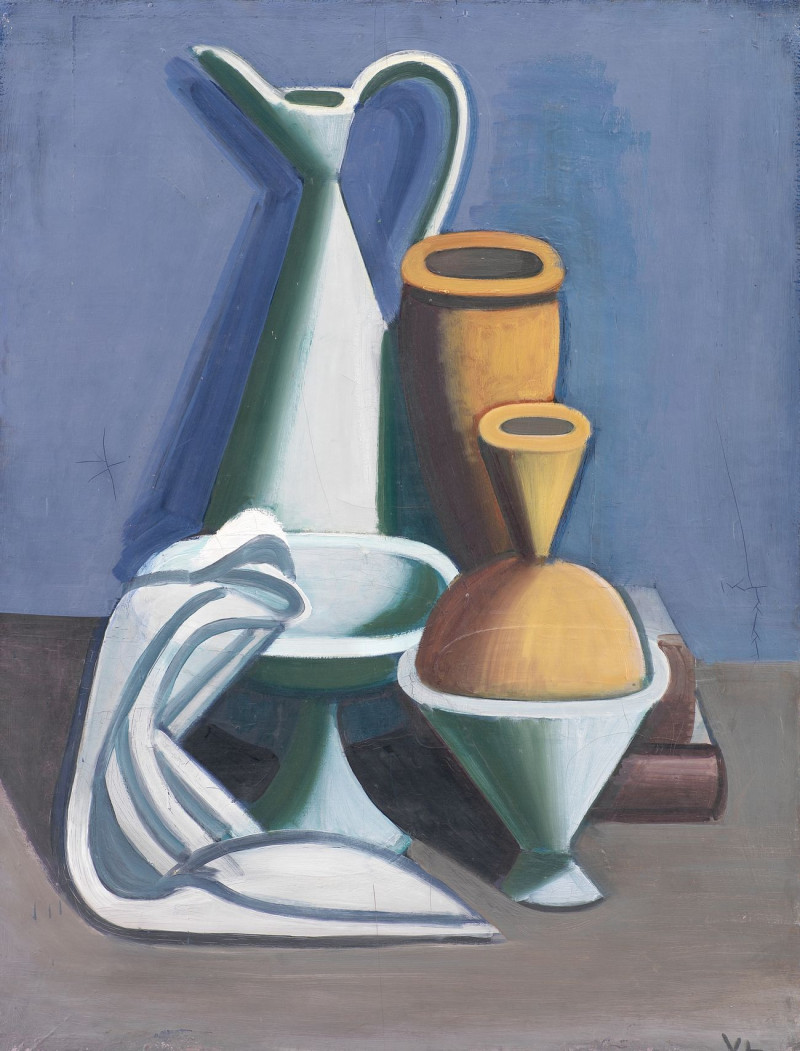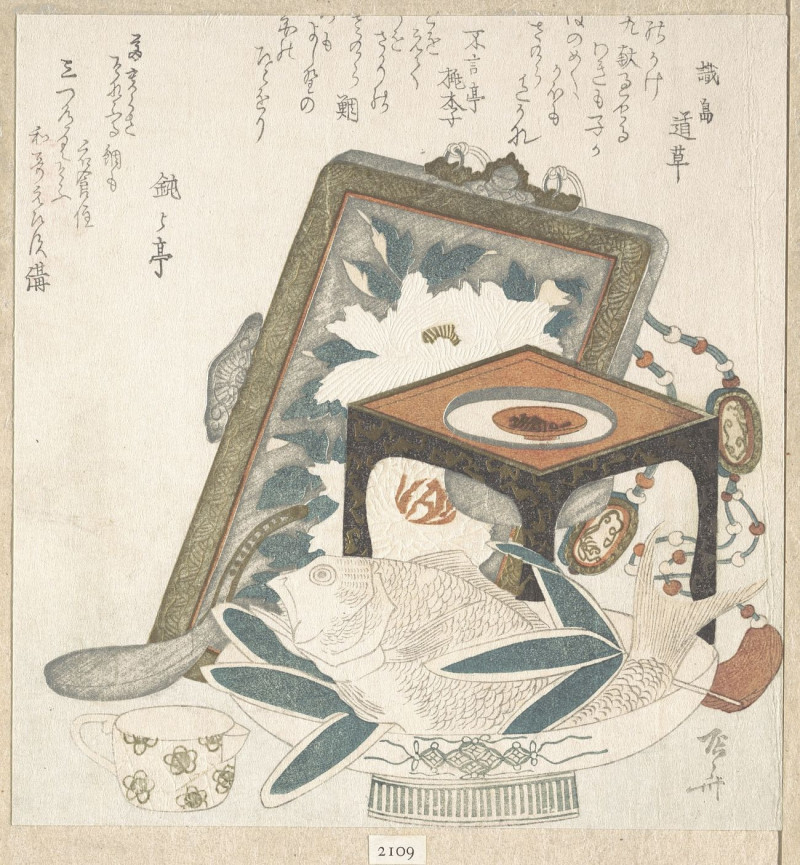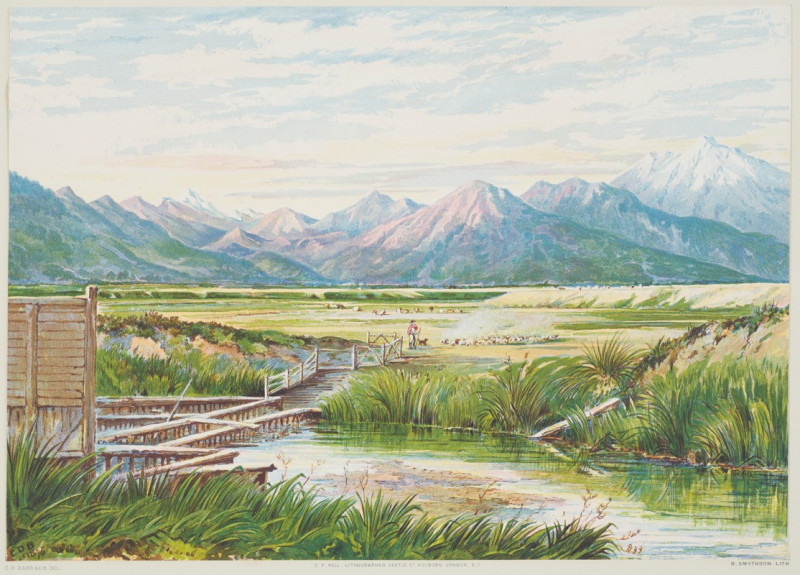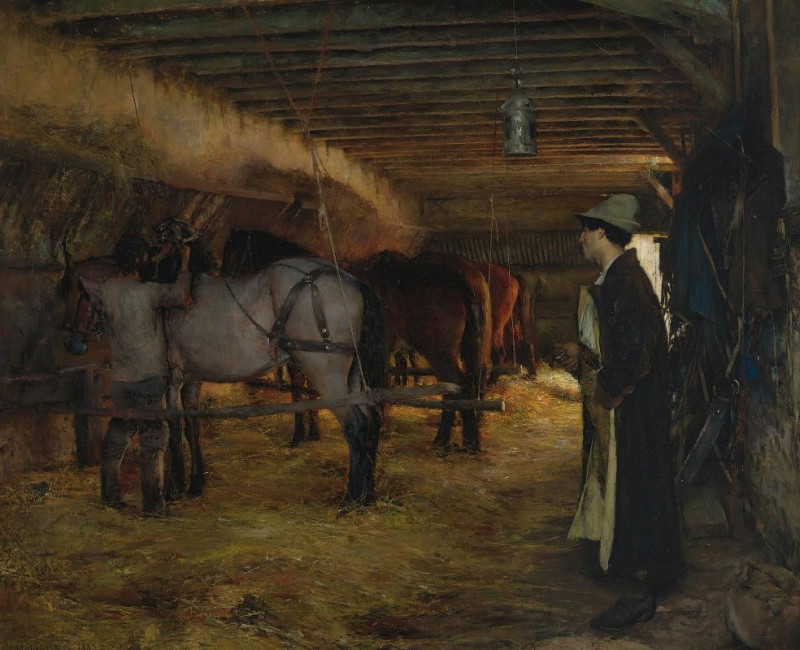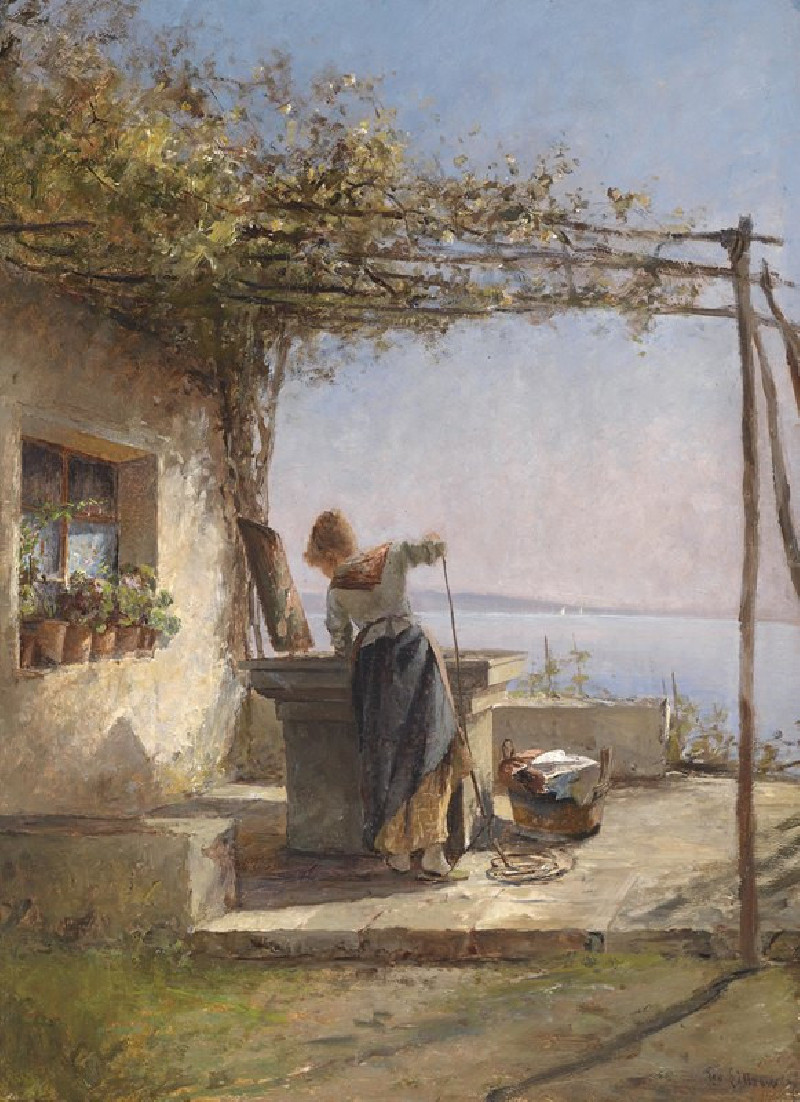Autumn Sowing of the Grain (ca. 1794)
Technique: Giclée quality print
Recommended by our customers
More about this artwork
In "Autumn Sowing of the Grain," a fine example of early English Romanticism by Joseph Mallord William Turner (ca. 1794), the artist captures the serene essence of rural life during the harvest season. The watercolor painting tenderly portrays an idyllic scene set against a softly rendered landscape background that exemplifies Turner’s mastery of light and atmosphere.At the core of this pastoral view, the artist details laboring figures in the fields, showing farmers engaged in the sowing of grain. These figures, outlined with a subtle precision, breathe life into the rural chores of the autumn season. Utilizing a delicate palette of earthy tones mixed with light washes, Turner adds a sense of ephemeral lightness to the scene, which enhances the artwork's ethereal quality.Dominating the middle background is a beautifully illustrated medieval church tower, a typical inclusion in Turner’s landscapes that combines elements of human achievement with the natural environment. This gives the piece a layered historical context, suggesting the continuity and timelessness of agricultural life.Spanning the foreground, several flocks of sheep contribute to the pastoral theme, emphasizing the symbiotic relationship between man and nature. The animals' tranquil presence complements the farmers' quiet toil and augments the overall sense of peaceful coexistence within the environment."Autumn Sowing of the Grain" is a captivating representation of pastoral life, reflecting Turner’s appreciation for nature and his exceptional ability to convey its beauty through art.
Delivery
Returns
Joseph Mallord William Turner RA, known in his time as William Turner, was an English Romantic painter, printmaker and watercolourist. He is known for his expressive colourisations, imaginative landscapes and turbulent, often violent marine paintings. He left behind more than 550 oil paintings, 2,000 watercolours, and 30,000 works on paper. He was championed by the leading English art critic John Ruskin from 1840, and is today regarded as having elevated landscape painting to an eminence rivalling history painting.

